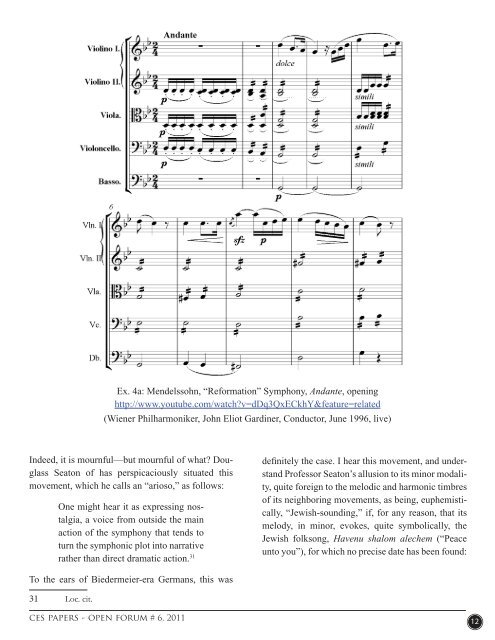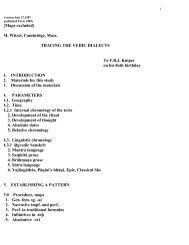references - people.fas.harvard.edu - Harvard University
references - people.fas.harvard.edu - Harvard University
references - people.fas.harvard.edu - Harvard University
Create successful ePaper yourself
Turn your PDF publications into a flip-book with our unique Google optimized e-Paper software.
Indeed, it is mournful—but mournful of what? Douglass<br />
Seaton of has perspicaciously situated this<br />
movement, which he calls an “arioso,” as follows:<br />
One might hear it as expressing nostalgia,<br />
a voice from outside the main<br />
action of the symphony that tends to<br />
turn the symphonic plot into narrative<br />
rather than direct dramatic action. 31<br />
To the ears of Biedermeier-era Germans, this was<br />
31 Loc. cit.<br />
ces papers - open forum # 6, 2011<br />
Ex. 4a: Mendelssohn, “Reformation” Symphony, Andante, opening<br />
http://www.youtube.com/watch?v=dDq3QxECkhY&feature=related<br />
(Wiener Philharmoniker, John Eliot Gardiner, Conductor, June 1996, live)<br />
defi nitely the case. I hear this movement, and understand<br />
Professor Seaton’s allusion to its minor modality,<br />
quite foreign to the melodic and harmonic timbres<br />
of its neighboring movements, as being, euphemistically,<br />
“Jewish-sounding,” if, for any reason, that its<br />
melody, in minor, evokes, quite symbolically, the<br />
Jewish folksong, Havenu shalom alechem (“Peace<br />
unto you”), for which no precise date has been found:<br />
�<br />
12

















